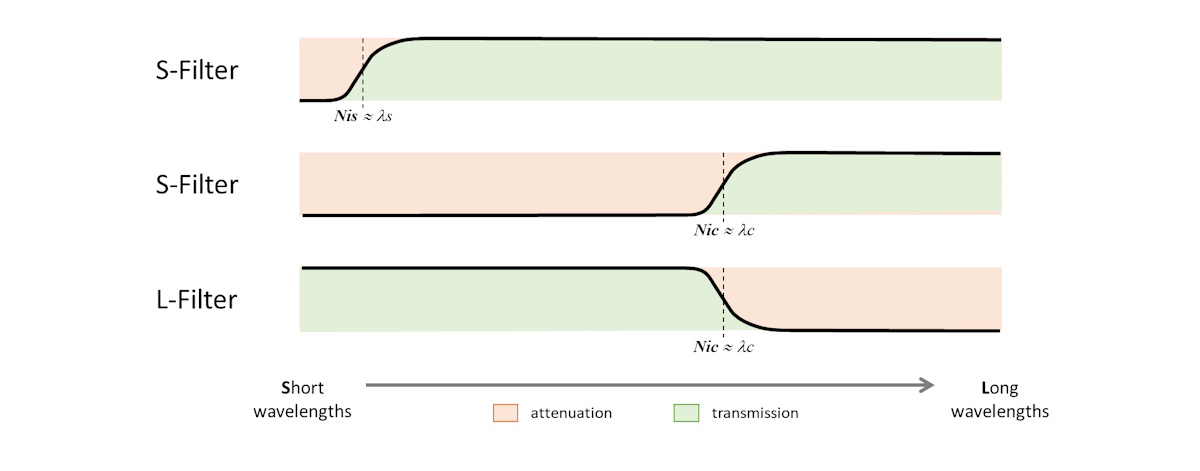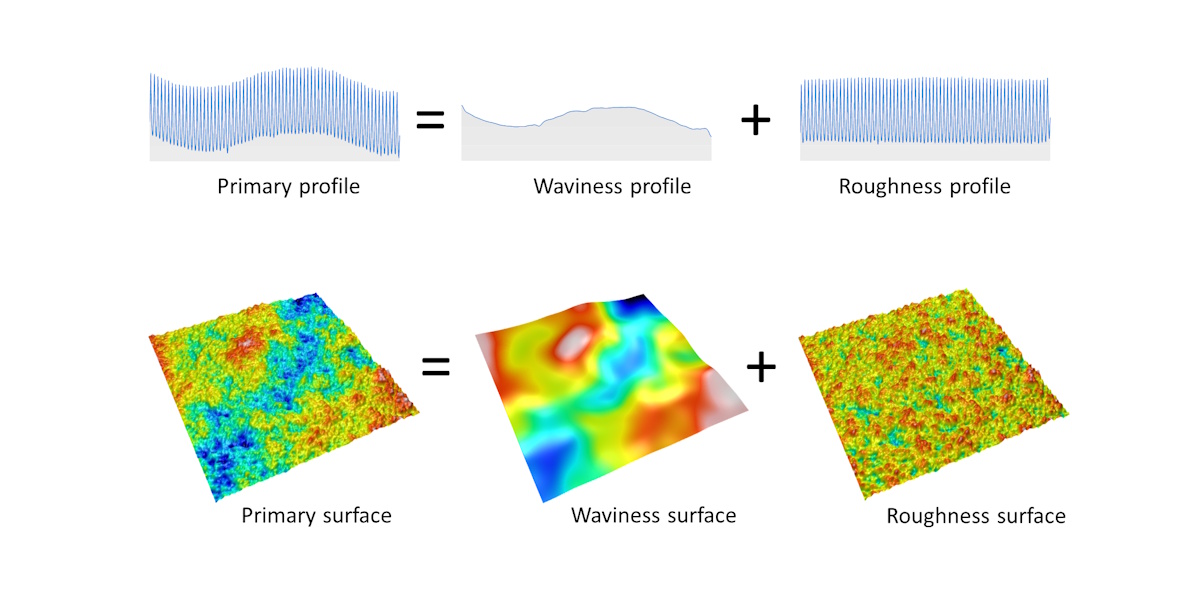Is the S Filter the same as the old λs filter?
Surface texture filtering has evolved with recent standards like ISO 25178 and ISO 21920, which introduced updated terminology. The traditional λs filter used to remove microroughness from profiles, but new concepts such as S-Filter and L-Filter now play distinct roles. This article tries to clarify the differences and reduce potential confusions in terms.
1. From λs filter to S Filter?
The λs filter, introduced in ISO 3274 and ISO 4288, was used, on profiles, to remove the microroughness that is composed of the shortest wavelengths, in order to obtain the primary profile which is the starting point of metrological analysis. Microroughness is mainly composed of instrumental and environmental noise and is of little interest.
The development of the areal surface texture standard series, ISO 25178, provided the ideal opportunity to define new vocabulary, which was later transposed to the profile series ISO 21920. This new vocabulary is sometimes a source of misinterpretation, in particular when users try to overlay the new concepts on the old terms too hastily. This article gives a detailed explanation of the new concepts with regards to filters and cut-offs, in order to help users to understand their meaning more precisely.
The new standards introduce two filter types, named with regards their action. As always, a filter is associated with a cut-off (also called nesting index) that defines at which wavelength the filter starts its action.
2. The S Filter
The S-Filter attenuates wavelengths shorter than the cut-off. The letter S means short and underlines its action of attenuation of wavelengths that are shorter than the cut-off.
But this S is not necessarily linked to the s of λs (which defines the cut-off value). The S-Filter uses a cut-off that can have any value.
- When it is small and used to remove microroughness, it is called Nis, with the s matching the meaning of the s in λs.
- When it is larger (ie. used to create waviness by filtering out shorter wavelengths) it is called Nic, referencing λc, the cut-off wavelength separating roughness from waviness.
3. The L-Filter
The second filter type, the L-Filter, attenuates wavelengths that are longer than the cut-off (L as in long). This filter attenuates what is on the right-hand side of its cut-off, again whatever its value. It is used to produce roughness, with a Nic cut-off.

The S-Filter attenuates wavelengths on the left side of the cut-off while the L-Filter attenuates wavelengths on the right side of the cut-off.
When combining these filters with the form removal operation, or F-Operator, we can produce either an SF-Surface or an SL-Surface (there is no LF-Surface). However, the SF-Surface can be of two types, depending on the cut-off used for the S-Filter, λs or λc.

SF surfaces or SL surfaces are obtained after the respective filters/operations have been applied.
The historical concepts of roughness and waviness were defined for profiles, and in this context, they are still perfectly valid. However, on surfaces, the texture may have different behaviors in X and Y, for example, a waviness-like behavior in X and a roughness-like behavior in Y. Therefore, these terms are not always valid, hence their replacement with more generic terms, SF Surface and SL surface.
Note that for some applications, the Nic cut-off used in the L Filter to generate roughness (or the SL surface) may be different from the Nic cut-off used in the S Filter to generate waviness (or the SF surface). In this case, it is recommended to use the notation Nic1 and Nic2.

Key points
The concepts of S-Filter and L-Filter do not have the same meaning as λs and λc cut-offs.
The Nis cut-off is similar to λs and can only be used with an S-Filter.
The Nic cut-off is similar to λc and can be used either with an S-Filter (to produce waviness) or with a L-Filter (to produce roughness).
The S-Filter attenuates wavelengths on the left side of the cut-off.
The L-Filter attenuates wavelengths on the right side of the cut-off.
See also:
- Introduction to filtration (video)
- Filtration techniques
- What cut-off should I use?
- How to use an S-Filter on a surface or a λs filter on a profile?